R.J. Stowell's Blog: rjsomeone, page 8
May 1, 2021
Orchestral Maneuvers in the Dark
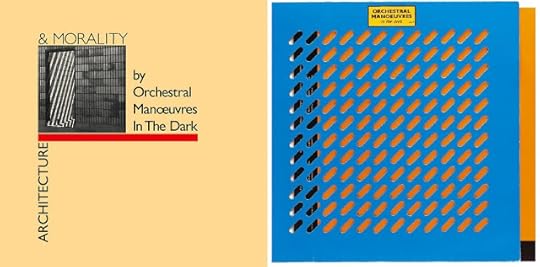
One of the striking things about 80s new wave was the artistic endeavors that went along with them, from the work of Brian Griffin to Anton Corbijn's Depeche Mode film, Strange. My progression into the 80s leads me now to Orchestral Maneuvers in the Dark. I discovered OMD early on with their self-titled debut simply because I loved the die-cut album cover (coincidentally by Peter Saville). The music was energetic if overly poppy (though you couldn’t help but dance to "Electricity"). But it was their 3rd LP, Architecture and Morality, that brought electronica to the public's attention and remains OMD's most distinctive release. The title was suggested by Martha Ladley of Martha and the Muffins after reading David Watkins' text of the same name. This is wildly artistic art-pop, and while some may pinpoint as the harbinger Depeche Mode, Gary Numan, or Kraftwerk, the latter was too German to serve as a zündkerze (spark plug) to electronic pop, Gary Numan too extreme for mainstream, and in 1981, Depeche Mode had not yet found their introspective side. Here, instead, we find Oscar Wilde on synth and a post-modern take on 20th-Century romanticism (I read that somewhere – oh yeah, I wrote it in 1981 for L.A. Weekly.) The melodies are simple, the lyrics poignant, the plastic instrumentation stunning - as if the album were manufactured in a sterile factory. At times Orchestral Maneuver in the Dark is distant and alienated (think Berlin-era Bowie), at times they are happy and poppy (again "Electricity"), but here they are pure commercial Art Rock.
 A&M was the first foray into sounds that had never before been heard by human ears. Depeche Mode would end up more popular and even embrace the genre and philosophy more fully, but this is the LP that opened the floodgates. Orchestral Maneuvers were part of that great period, post-punk, post-disco, when independent radio sought out artists like Cocteau Twins, Kate Bush, and Prefab Sprout. There was a gossamer quality to the genre that unlike other music of its time, holds up marvelously. It was OMD that perfected the marriage between gorgeous melody and ambient experimentation. A&M incorporated choral tapes here, mellotrons there, electronic percussion in league with military drums and primitive ambient sounds set amongst the synth-wash of anthems like "Sealand," an artsy, ambient romp dripping with melancholic synth lines and enough mood to cover a beach. From the 12" hits like "Joan of Arc (Maid of Orleans)" to "Souvenir" to the atmospheric "The Beginning and the End," what may be most intriguing is the fact that Architecture and Morality is such a monumental period piece (a "period" that vanished in the blink of an eye). Perhaps the most progressive track on the album is "Georgia," a poppy eschatological bomb-age hymn, utilizing tape loops of long-wave radio synced perfectly with the music and berserk bursts of electronic noise. It certainly points the way forward to another astonishing album, 1983's far less accessible Dazzle Ships, not to mention DM’s Black Celebration, Simple Minds and Ultravox, and more recently, bands like M83 and MGMT.
A&M was the first foray into sounds that had never before been heard by human ears. Depeche Mode would end up more popular and even embrace the genre and philosophy more fully, but this is the LP that opened the floodgates. Orchestral Maneuvers were part of that great period, post-punk, post-disco, when independent radio sought out artists like Cocteau Twins, Kate Bush, and Prefab Sprout. There was a gossamer quality to the genre that unlike other music of its time, holds up marvelously. It was OMD that perfected the marriage between gorgeous melody and ambient experimentation. A&M incorporated choral tapes here, mellotrons there, electronic percussion in league with military drums and primitive ambient sounds set amongst the synth-wash of anthems like "Sealand," an artsy, ambient romp dripping with melancholic synth lines and enough mood to cover a beach. From the 12" hits like "Joan of Arc (Maid of Orleans)" to "Souvenir" to the atmospheric "The Beginning and the End," what may be most intriguing is the fact that Architecture and Morality is such a monumental period piece (a "period" that vanished in the blink of an eye). Perhaps the most progressive track on the album is "Georgia," a poppy eschatological bomb-age hymn, utilizing tape loops of long-wave radio synced perfectly with the music and berserk bursts of electronic noise. It certainly points the way forward to another astonishing album, 1983's far less accessible Dazzle Ships, not to mention DM’s Black Celebration, Simple Minds and Ultravox, and more recently, bands like M83 and MGMT.
April 30, 2021
DM, Kate Bush and Brian Griffin
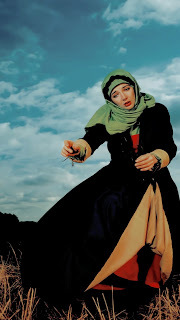 In my writing, indeed in life itself, I've always been one to fall for the Zen of things, the natural progression from one thing to the next, and a recent article emphasized the early Depeche Mode LPs. So, of course, I listened to them all. It was A Broken Frame, though, that led me back once again to an artist I revere as much as Joni Mitchell and head and shoulders over most others, Kate Bush. Kate saw the covers for DM's 2nd LP and she and Griffin decided to put Kate into the aura of the album's cover, a woman like that found in Jean-François Millet's "The Gleaners." I have on vinyl all four boxed Kate Bush remasters (10 studio albums plus remixes and rarities). Guess what I'm going to do today?Two days later... As mentioned, the Zen of things pointed toward Kate Bush. From Depeche Mode to Griffin to Bush, a triple play. But the car had other ideas and my Spotify luck of the draw chose Echo and the Bunnymen instead. From Crocodiles they played "Rescue," and from Ocean Rain, "Seven Seas" and "The Killing Moon." As synchronicity stepped in, my mind started wandering ("where it will go…") and it seemed to me that the album covers were rather Griffin-like. Sure enough, Echo and the Bunnymen's album covers were indeed a part of Griffin's work. I had no idea.
In my writing, indeed in life itself, I've always been one to fall for the Zen of things, the natural progression from one thing to the next, and a recent article emphasized the early Depeche Mode LPs. So, of course, I listened to them all. It was A Broken Frame, though, that led me back once again to an artist I revere as much as Joni Mitchell and head and shoulders over most others, Kate Bush. Kate saw the covers for DM's 2nd LP and she and Griffin decided to put Kate into the aura of the album's cover, a woman like that found in Jean-François Millet's "The Gleaners." I have on vinyl all four boxed Kate Bush remasters (10 studio albums plus remixes and rarities). Guess what I'm going to do today?Two days later... As mentioned, the Zen of things pointed toward Kate Bush. From Depeche Mode to Griffin to Bush, a triple play. But the car had other ideas and my Spotify luck of the draw chose Echo and the Bunnymen instead. From Crocodiles they played "Rescue," and from Ocean Rain, "Seven Seas" and "The Killing Moon." As synchronicity stepped in, my mind started wandering ("where it will go…") and it seemed to me that the album covers were rather Griffin-like. Sure enough, Echo and the Bunnymen's album covers were indeed a part of Griffin's work. I had no idea. Circa 1981, I lived in Park LaBrea in L.A., adjacent to the Tar Pits. From my bedroom window I could see the HOLLYWOOD Sign; from the living room through the trees was a mastodon. A friend and I hit Vinyl Fetish on Melrose, then had a chili-dog at Pink's before heading back to my apartment to play DJ. My friend got Orchestral Maneuvers and Soft Cell. I got New Order's Movement. At Vinyl Fetish, he pointed and said, “If you like that, you’ve got to get this.” It was Crocodiles. Into the Zen of it even then, I had no choice. And he was right. It was like Joy Division but poppier with overdubs and a kind of cheery melancholy. Right Down my alley.
Circa 1981, I lived in Park LaBrea in L.A., adjacent to the Tar Pits. From my bedroom window I could see the HOLLYWOOD Sign; from the living room through the trees was a mastodon. A friend and I hit Vinyl Fetish on Melrose, then had a chili-dog at Pink's before heading back to my apartment to play DJ. My friend got Orchestral Maneuvers and Soft Cell. I got New Order's Movement. At Vinyl Fetish, he pointed and said, “If you like that, you’ve got to get this.” It was Crocodiles. Into the Zen of it even then, I had no choice. And he was right. It was like Joy Division but poppier with overdubs and a kind of cheery melancholy. Right Down my alley.Several years later, I saw them at the Peppermint Lounge in NYC. Thomas Dolby was there next to me bopping along with scary Ian up on stage. We had the same wire-framed glasses. I got a kick out of that. It was like being one of the Pirate Twins ("Europa"). In my collection, I have only one Echo LP, Ocean Rain. I just finished side one. After the flip side, I guess it's on to The Flat Earth, I have no choice.
April 27, 2021
Fac
 Some things are fabulous for a day, they snag their fifteen minutes and that's cool enough, but then there are Beatles and Coco Chanel, Audrey Hepburn and Truman Capote. Things iconic range from The Tempest to Death Cab. 400 years separate Ben Gibbard and Shakespeare, but not for me. Each is perfect.
Some things are fabulous for a day, they snag their fifteen minutes and that's cool enough, but then there are Beatles and Coco Chanel, Audrey Hepburn and Truman Capote. Things iconic range from The Tempest to Death Cab. 400 years separate Ben Gibbard and Shakespeare, but not for me. Each is perfect. The 80s were my era, and I was lucky enough to have embraced them and to have squeezed out the sublime (the quality of greatness), a huge part of which was Joy Division, a band that would become, following the death of singer/songwriter Ian Curtis, New Order. The music was dark and self-absorbed, dance-able, infectious and all consuming. New Order invented self-absorption, not to mention club music, sampling, bass lines as melody, and the automobile (maybe I exaggerate).
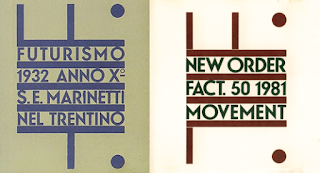 Factory Records emerged from out of a club of the same name in 1978. A year later, Tony Wilson and Alan Erasmus were joined by Peter Saville and Martin Hannett to form Factory Records, and released their first EP, A Factory Sampler in 1979.
Factory Records emerged from out of a club of the same name in 1978. A year later, Tony Wilson and Alan Erasmus were joined by Peter Saville and Martin Hannett to form Factory Records, and released their first EP, A Factory Sampler in 1979. The first LP released by Factory was Unknown Pleasures (Fac10) in 1979. The album received critical acclaim, the band subsequently appearing on the cover of NME and on the BBC's Peel Sessions; the album cover becoming as iconic as Sgt. Pepper. (Although the Factory emphasis is always on JD and NO, Factory Records signed Orchestral Maneuvers in the Dark ("Electricity," Fac6), the Durutti Column and A Certain Ratio.)
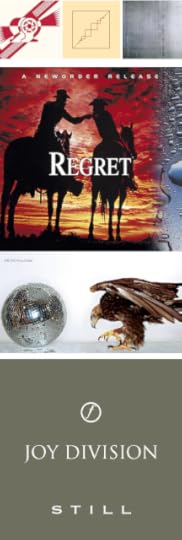
The 1980s were graphic art's heyday and Peter Saville turned album covers into artwork. You wanted to hang them on the wall or carry them around. They were stark and industrial, a symbol of a new digital age, of things that didn't exist before. They are so iconic and intrinsically aesthetic that Microsoft commissioned the artist to create the first in a line of limited edition Zune mp3 players utilizing the Unknown Pleasures album cover. (Many of you, of course, don’t even know what a Zune is.) Note the Movement album cover sitting side by side with the original art deco design from Fotunato Depero in the 1920s. I think it was TS (Tough Shit) Eliot who said, "Good writers borrow. Great writers steal." I guess it holds true for artwork as well. Saville would go on to capture more of Depero's work as his folio of Factory Records covers was assembled. Factory Records, New Order and Peter Saville made artwork and design an integral part of 80s music; design that speaks for itself.
The images that Peter Saville created for Joy Division, New Order and, later, Suede and Pulp were so compelling that they struck the same emotional resonance with the people who bought those albums and singles as the music. Just as the musicians in those bands wrote and produced their songs as catalogs of their thoughts and feelings, so Saville has conceived his images – for fashion and art projects as well as music – as visual narratives of his life.
Born in Manchester in 1955, Saville was brought up in the affluent suburb of Hale. Having been introduced to graphic design with his friend Malcolm Garrett by Peter Hancock, their sixth form art teacher, Saville decided to study graphics at Manchester Polytechnic, where he was soon joined by Garrett. At the time Saville was obsessed by bands like Kraftwerk and Roxy Music, but Garrett encouraged him to discover the work of early modern movement typographers such as Herbert Bayer and Jan Tschichold. He found their elegantly ordered aesthetic more appealing than the anarchic style of punk graphics. Tschichold was the inspiration for Saville’s first commercial project, the 1978 launch poster for The Factory, a club night run by a local TV journalist Tony Wilson whom he had met at a Patti Smith gig. Having long admired the ‘found’ motorway sign on the cover of Kraftwerk’s Autobahn, the first album he bought for himself, Saville based the Factory poster on a found object of his own – an industrial warning sign he had stolen from a door at college.50 Feels Like a Long Time Ago - 40 Even Longer...
I was 21 in 1981 and lucky to be working in the industry. Because of a cake job, I was part of an entourage that took Haircut 100 to Disneyland (I rode Alice in Wonderland with Nick Heyward), sat at the pool at the Hollywood Roosevelt with Spandau Ballet, and went to Dave Gahan’s 21st birthday party. I truly was living the new wave dream. My work on the AM Network has me constantly researching and reviewing the music of 50 years ago, but lately, in my alone-time, it’s been all about the early 80s instead – ho-hum, 40 years ago. While the 70s were my informative years, I spent the 80s in my 20s. Oh, not the 80s of hair metal and Lionel Richie, but the first wave that included New Order, The Smiths, Prefab Sprout, and Depeche Mode. It’s funny that the danceability of the times negated how penetrating and thought-provoking the music could be. From the Smiths to the Pet Shop Boys, politics and social criticism played an ever-present role. You wouldn’t always think so, but the same is true of Depeche Mode.
 To start in media res, what better way to introduce DM than with “Love, In Itself.” From the band’s 3rd LP, Construction Time Again, the track is quintessential in the canon for its infectious melodies, over-the-top romanticism, dramatic vocals, and complex dance beats – and not a single organic instrument! From the same LP and along the same lines, we get “Everything Counts,” a catchy tune wrapped around social narcissism and consumerism: "The grabbing hands, grab all they can. All for themselves, after all.” Not only does the band have you bobbing your head, but they also have you using it. My introduction to the band came in 1983 with “Blasphemous Rumours” a song that for those of faith, including myself, was a bit hard to swallow. Similar to XTC’s “Dear God,” the track was not so much anti-Christian but anti-religion, and many detractors see it as an atheistic anthem. Make up your own mind, of course, but for me, “Blasphemous Rumours” stands as a song that says, simply, God helps those who help themselves, a philosophy that goes back to Sophocles. In 1984 we get three tracks, including “Somebody.” If you’re looking for melancholy, look no further. Sounding as if it were played in an empty auditorium with vocals and a grand piano and the ambiance of conversations and children playing, the song is incredibly romantic in the unrequited ilk. One of my favorites “But Not Tonight” comes from the same album (Black Celebration), but only if you have the American pressing. It was left off the U.K. issue and from the most recent re-release. My third selection from a flawless LP is “Here is the House,” a song that had great meaning for me in the 80s because, despite my wild L.A. New Wave days, I aspired to be a family man. Today, it’s a song that truly encompasses who I am as a husband and father, and homeowner with dogs and chickens and a lawn to mow. From 1990, of course, is their biggest hit. “Enjoy the Silence” a track that represents Depeche Mode at their artistic and commercial apex: layered electronics and arpeggios, grim lyrics, and of course, Dave Gahan wandering around the English countryside dressed as a king. What more could you want? Finally, a love song, or its antithesis, in my favorite DM track, “Shake the Disease,” about a person afraid to express his true emotions, hoping, instead, that the other person will understand what he feels and wants to say without having to say it. Yes, indeed, it’s sappy, and if sappy is all you want, you get it from Depeche Mode in spades, but when you look deeper into the tracks, you find truth somewhere within the electronic beat. “Shake the Disease” contains no organic instruments, typical of the DM canon, and therefore the soundscape is one that no one has ever heard before: man-made noises or those that come from the environment, an environment that includes the chain of a roller coaster and Dave Gahan’s Porsche growling in the background. If you still turn up your nose it Depeche Mode, I am sorry for you.
To start in media res, what better way to introduce DM than with “Love, In Itself.” From the band’s 3rd LP, Construction Time Again, the track is quintessential in the canon for its infectious melodies, over-the-top romanticism, dramatic vocals, and complex dance beats – and not a single organic instrument! From the same LP and along the same lines, we get “Everything Counts,” a catchy tune wrapped around social narcissism and consumerism: "The grabbing hands, grab all they can. All for themselves, after all.” Not only does the band have you bobbing your head, but they also have you using it. My introduction to the band came in 1983 with “Blasphemous Rumours” a song that for those of faith, including myself, was a bit hard to swallow. Similar to XTC’s “Dear God,” the track was not so much anti-Christian but anti-religion, and many detractors see it as an atheistic anthem. Make up your own mind, of course, but for me, “Blasphemous Rumours” stands as a song that says, simply, God helps those who help themselves, a philosophy that goes back to Sophocles. In 1984 we get three tracks, including “Somebody.” If you’re looking for melancholy, look no further. Sounding as if it were played in an empty auditorium with vocals and a grand piano and the ambiance of conversations and children playing, the song is incredibly romantic in the unrequited ilk. One of my favorites “But Not Tonight” comes from the same album (Black Celebration), but only if you have the American pressing. It was left off the U.K. issue and from the most recent re-release. My third selection from a flawless LP is “Here is the House,” a song that had great meaning for me in the 80s because, despite my wild L.A. New Wave days, I aspired to be a family man. Today, it’s a song that truly encompasses who I am as a husband and father, and homeowner with dogs and chickens and a lawn to mow. From 1990, of course, is their biggest hit. “Enjoy the Silence” a track that represents Depeche Mode at their artistic and commercial apex: layered electronics and arpeggios, grim lyrics, and of course, Dave Gahan wandering around the English countryside dressed as a king. What more could you want? Finally, a love song, or its antithesis, in my favorite DM track, “Shake the Disease,” about a person afraid to express his true emotions, hoping, instead, that the other person will understand what he feels and wants to say without having to say it. Yes, indeed, it’s sappy, and if sappy is all you want, you get it from Depeche Mode in spades, but when you look deeper into the tracks, you find truth somewhere within the electronic beat. “Shake the Disease” contains no organic instruments, typical of the DM canon, and therefore the soundscape is one that no one has ever heard before: man-made noises or those that come from the environment, an environment that includes the chain of a roller coaster and Dave Gahan’s Porsche growling in the background. If you still turn up your nose it Depeche Mode, I am sorry for you.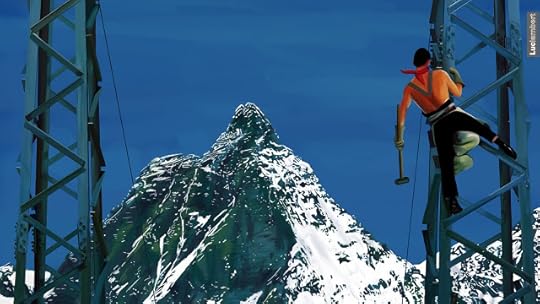
April 25, 2021
Won't Get Fooled Again
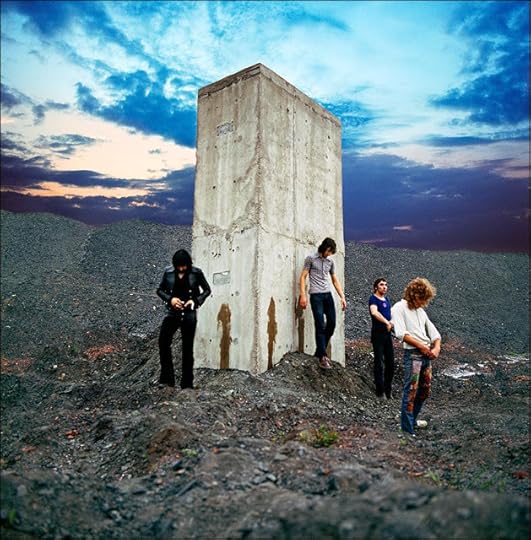 Pete Townshend was brimming with ideas as the '60s went '70s. The Who were coming off Tommy and the massive tour that followed. An entire generation was sparked by the "rock opera," which eventually generated a movie, a Broadway musical, and countless imitators. Tommy was a cultural milestone, which left Townshend reeling and in "what's next?" mode. ("I see what you’re doing there.")For the band's guitarist and chief songwriter, the answer was another extended work. Townshend started piecing together the concept for the band's fifth LP, Lifehouse. The initial idea stemmed from the Who's enormous popularity over the past several months as the band moved further and further away from its fan base – figuratively and literally. In the dystopian Lifehouse future, rock music is banned, though kids have found a way to recreate the experience through a form of virtual reality where they gather to listen and commune – a house where the music takes on a religious quality. Townshend said he suffered a nervous breakdown when he couldn't assemble the complexities of the piece in a cohesive way but liked several of the new songs enough that he continued to work on and refine them. He scrapped the Lifehouse concept and assembled the remnants into a straight-edged rock 'n' roll record. The result, Who's Next, was released on Aug. 14, 1971, for many, the Who's finest album, a filler-free explosion of power riffs, generation-sparking lyrics, and larynx-shredding anthems, including the greatest scream in rock 'n' roll. 50 years ago. In April, The Who teamed with Glyn Johns in the producer's chair instead of Kit Lambert. Their first session took place at Stargroves, Mick Jagger's Victorian mansion in Newbury, Berkshire, using The Rolling Stones Mobile Studio. In a hallway, Johns recorded a blistering version of "Won't Get Fooled Again, parts of which were used for the final take. "Going Mobile" was recorded in the same session.Having had such success with his first try, Johns easily talks The Who into continuing recording at his home studio, Olympic Sound in Barnes, South West London. Sessions run from the 9th through the 12th and in that short session, "Too Much Of Anything," with Nicky Hopkins on piano, "Time Is Passing" and the first version of "Bargain" were recorded, though none of the takes would make the final album release. On May 11, The Who completed recording "Song Is Over" at Olympic Studios and before mid-June they would complete "Baba O'Riley," "Love Ain't For Keeping," "My Wife," "Behind Blue Eyes," "Let's See Action," "When I Was a Boy," and "Pure And Easy." Time for the iconic cover shoot.Ethan Russell, the American photographer who took the album’s cover shot said, "The band had virtually finished Who’s Next, but still didn’t have a clue about what to do about the cover." It was at this point that fate smiled benevolently. "We were driving back through County Durham from a gig one night, doing about 110 miles per hour down the motorway – which freaked me out. Pete was driving, and he asked me whether I had any ideas for the sleeve. Then suddenly, we passed these three or four pillars on the landscape." Bam. One of rock's greatest achievements - done. A funny aside: In June, Dennis Wilson of The Beach Boys put his hand through a window severing several tendons. Unable to tour, The Beach Boys offered a temporary gig to Keith Moon, but the completion of Who's Next kept Moony from his dream job, touring with The Beach Boys.
Pete Townshend was brimming with ideas as the '60s went '70s. The Who were coming off Tommy and the massive tour that followed. An entire generation was sparked by the "rock opera," which eventually generated a movie, a Broadway musical, and countless imitators. Tommy was a cultural milestone, which left Townshend reeling and in "what's next?" mode. ("I see what you’re doing there.")For the band's guitarist and chief songwriter, the answer was another extended work. Townshend started piecing together the concept for the band's fifth LP, Lifehouse. The initial idea stemmed from the Who's enormous popularity over the past several months as the band moved further and further away from its fan base – figuratively and literally. In the dystopian Lifehouse future, rock music is banned, though kids have found a way to recreate the experience through a form of virtual reality where they gather to listen and commune – a house where the music takes on a religious quality. Townshend said he suffered a nervous breakdown when he couldn't assemble the complexities of the piece in a cohesive way but liked several of the new songs enough that he continued to work on and refine them. He scrapped the Lifehouse concept and assembled the remnants into a straight-edged rock 'n' roll record. The result, Who's Next, was released on Aug. 14, 1971, for many, the Who's finest album, a filler-free explosion of power riffs, generation-sparking lyrics, and larynx-shredding anthems, including the greatest scream in rock 'n' roll. 50 years ago. In April, The Who teamed with Glyn Johns in the producer's chair instead of Kit Lambert. Their first session took place at Stargroves, Mick Jagger's Victorian mansion in Newbury, Berkshire, using The Rolling Stones Mobile Studio. In a hallway, Johns recorded a blistering version of "Won't Get Fooled Again, parts of which were used for the final take. "Going Mobile" was recorded in the same session.Having had such success with his first try, Johns easily talks The Who into continuing recording at his home studio, Olympic Sound in Barnes, South West London. Sessions run from the 9th through the 12th and in that short session, "Too Much Of Anything," with Nicky Hopkins on piano, "Time Is Passing" and the first version of "Bargain" were recorded, though none of the takes would make the final album release. On May 11, The Who completed recording "Song Is Over" at Olympic Studios and before mid-June they would complete "Baba O'Riley," "Love Ain't For Keeping," "My Wife," "Behind Blue Eyes," "Let's See Action," "When I Was a Boy," and "Pure And Easy." Time for the iconic cover shoot.Ethan Russell, the American photographer who took the album’s cover shot said, "The band had virtually finished Who’s Next, but still didn’t have a clue about what to do about the cover." It was at this point that fate smiled benevolently. "We were driving back through County Durham from a gig one night, doing about 110 miles per hour down the motorway – which freaked me out. Pete was driving, and he asked me whether I had any ideas for the sleeve. Then suddenly, we passed these three or four pillars on the landscape." Bam. One of rock's greatest achievements - done. A funny aside: In June, Dennis Wilson of The Beach Boys put his hand through a window severing several tendons. Unable to tour, The Beach Boys offered a temporary gig to Keith Moon, but the completion of Who's Next kept Moony from his dream job, touring with The Beach Boys.
April 20, 2021
Ristle-tee Rostle-tee - An Excerpt from Calif.
 I’d spent a lot of time sleeping in the van and never felt squeamish or afraid. Golden Gate Park was filled with hippies and Bohemians, and so I parked the V-dub by the Japanese Tea Garden and tucked myself in. Yet as cheerful and colorful as San Francisco was by day, it was that much more frightening at night. People wandering about, others tripping; an old man peeing on a tree and living in a box. (Who was the free spirit and who was the vagrant?) I heard shots and a siren; someone was in trouble.
I’d spent a lot of time sleeping in the van and never felt squeamish or afraid. Golden Gate Park was filled with hippies and Bohemians, and so I parked the V-dub by the Japanese Tea Garden and tucked myself in. Yet as cheerful and colorful as San Francisco was by day, it was that much more frightening at night. People wandering about, others tripping; an old man peeing on a tree and living in a box. (Who was the free spirit and who was the vagrant?) I heard shots and a siren; someone was in trouble. It wasn’t the pretty ideal we’d all seen in Life magazine, so I took the keys from the glove box and figured I’d get out of there. I headed over the Golden Gate Bridge into Marin County and got back on the coastal road along Point Reyes. The moon was out and shimmering on the water.
It was balmy and still as I got to Bodega Bay. I pulled into a parking lot in the marina. It was the town where Hitchcock filmed The Birds. Across the way was the diner where the woman told Tippi Hedren that the bird attacks were her fault, like she was evil.
I fell asleep as soon as my head hit the pillow and awoke in the morning to a jolt. You couldn’t really see anything shake, but you could see the ripple in the windows, and the gas station attendant was walking as if he were intoxicated, as if the ground was coming out from beneath him. It was an earthquake. You’d think growing up in California you’d be used to them. You never get used to the them. Seconds later, it was over.
 I dressed and made myself presentable, stuck my toothbrush in my pocket and went into the diner. The restrooms were right there in front. I brushed my teeth, washed my face, combed my hair and when I came out, the buzz was still about the tremor. “I’d say 5.3,” a man said. A woman replied, “The big one’s coming.” I sat at the counter and without asking, the waitress brought me coffee.
I dressed and made myself presentable, stuck my toothbrush in my pocket and went into the diner. The restrooms were right there in front. I brushed my teeth, washed my face, combed my hair and when I came out, the buzz was still about the tremor. “I’d say 5.3,” a man said. A woman replied, “The big one’s coming.” I sat at the counter and without asking, the waitress brought me coffee. The diner looked like nothing had changed since the birds were all in a tizzy. The big picture windows looked out onto the bay and the fisheries, but across the inlet there wasn’t a little farm where Mitch lived with his mother and sister. Instead there was an abandoned cannery. I had my breakfast and bought a couple postcards. I sent one to my mother and one to Lori Upton addressed to her parents, although I think she was in Europe. She was, after all, the girl who gave me my kidney, the one that works, as opposed to the one my father gave me, that didn’t. On a dozen levels, I was still in love with her. If you want to know more, you’ll have to read Miles From Nowhere, an incredible work of typing, coming soon from Random House. For now, suffice it to say that I keep in touch. People who make that kind of sacrifice deserve a post card every once in a while. It was a photo of the diner. She really liked The Birds; it was one of her favorite films. I hoped to find the old schoolhouse, and it wasn’t hard. It was just a mile up from the marina; you could see its cupola in the distance. It was abandoned and boarded up. The steps to the front door were missing. I parked by the monkey bars where the crows assembled on the playground, and suddenly, I heard the song:
The butter came out a grizzle-y-grey. Ristle-tee, rostle-tee, now, now, now! The cheese took legs and ran away! Ristle-tee, rostle-tee, hey donny dostle-tee, knickety-knackety, retro-quo-quality, willoby-wallaby, now, now, now!
I got my journal and tried to jot down the words as the tune ran over in my head. I could picture the birds congregating on the jungle gym. The sky was gray with pockets of blue; the bay was filled with shadows. I was thinking about Lori Upton in Venice or in Luxembourg. I could see her standing with a pigeon on her shoulder at Trafalgar Square. I wondered if she could see me sitting here like Tippi Hendren.I asked my wife to wash the floor.
Ristle-tee, rostle-tee, now, now, now! She gave me my hat and she showed me the door!
 Ristle-tee, rostle-tee, hey donny dostle-tee, knickety-knackety, retro-quo-quality, willoby-wallaby, Now, now, now!
Ristle-tee, rostle-tee, hey donny dostle-tee, knickety-knackety, retro-quo-quality, willoby-wallaby, Now, now, now!I got back in the van and drove down the hill; the birds were chasing the children from the schoolyard. Back on the highway, I was tortured by the lyrics. “She cooked the [blank] in her Daddy’s old shoe.” What did she cook? I almost ran off the road; knickity-knackity, now, now, now. I drove until I got to Eureka.
April 18, 2021
"My Way" and "Life on Mars"
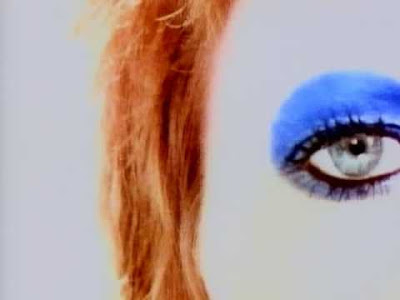 It was common in the 60s for European hits to be picked up by British or American publishers, who in turn commissioned English lyrics to the tune. "You Don’t Have to Say You Love Me" by Dusty Springfield is a good example, it was originally an Italian pop hit.
It was common in the 60s for European hits to be picked up by British or American publishers, who in turn commissioned English lyrics to the tune. "You Don’t Have to Say You Love Me" by Dusty Springfield is a good example, it was originally an Italian pop hit. "Comme d’Habitude" was a hit for Claude François (often referred to as CloClo), and the song's publisher realized an English lyric could be quite lucrative. A call was made to Denmark Street, London's Tin Pan Alley, and the tuned was jobbed out to a young songwriter named Davy Jones, who would later change his name to David Bowie to avoid confusion with the Monkees' star. Bowie wrote the first English lyric for "My Way" for an entertainer he greatly admired, one of Britain's biggest stars – Anthony Newley.
Newley was overly partial to the maudlin Pagliacci tears-of-a-clown persona, so that's what Bowie conceived:
There was a timeThe laughing timeI took my heartTo ev'ry partyThey’d point my way‘How are you today?Will you make us laugh?Chase our blues away?’Their funny manWon’t let them downNo, he’d dance and pranceAnd be their clownThat timeThat laughing timeThat Even A Fool Learns To Love…Bowie coined the words that would give Anka his title: "My Way," but didn't care for the track once it was finished. "'Even a Fool Learns to Love,' is purple, self-pitying and, worse, full of sad clowns."
In 1969 Paul Anka acquired the rights to CloClo's hit, and the rest is Sinatra-Cool history. But we're not done – neither was Bowie who, 50 years ago, would parody his own version, as well as Frank's when he penned "Life On Mars." "I started working it out on the piano and had the whole lyric and melody finished by late afternoon. Nice. Rick Wakeman came over a couple of weeks later and embellished the piano part and guitarist Mick Ronson created one of his first and best string parts for this song which now has become something of a fixture in my live shows."
The abstract lyrics coupled with the thumping music transports the listener to an out of this world experience, a surreal “My Way.”
Hunky Dory
 Hunky Dory was the fourth album in Bowie's discography and his first for RCA Records. When he began recording the album in the summer of 1971, he was without a recording contract and was only several years removed from "dustbin shopping" for clothes on Carnaby Street with Marc Bolan of T-Rex. With the exception of the heavier sounding The Man Who Sold the World, his previous album, Bowie was more or less a folky singer-songwriter whose clever lyrics set him apart from his contemporaries and promised a bright future ahead.
Hunky Dory was the fourth album in Bowie's discography and his first for RCA Records. When he began recording the album in the summer of 1971, he was without a recording contract and was only several years removed from "dustbin shopping" for clothes on Carnaby Street with Marc Bolan of T-Rex. With the exception of the heavier sounding The Man Who Sold the World, his previous album, Bowie was more or less a folky singer-songwriter whose clever lyrics set him apart from his contemporaries and promised a bright future ahead. Hunky Dory represents the coming of age of a yet-to-be iconic superstar who used the album to tinker with the sounds and themes that he wanted and later explored on The Rise and Fall of Ziggy Stardust and The Spiders from Mars (1972). The LP is also is the first in which he was backed by his Spiders From Mars (Mick Ronson on guitars, Trevor Bolder on bass guitar, and Mick Woodmansey on drums with a special appearance by Rick Wakeman on keyboards).
The opening track "Changes" is representative of the mood Hunky Dory evokes. It brings Bowie back to his breezy, Anthony Newley style of song craftsmanship that he was known for at the beginning of his career. The song is a subtle acknowledgment that he would not be occupying this particular artistic space for very long, as he sings, "Strange fascination, fascinating me / Changes are taking the pace I'm going through." The track remains his most iconic radio tune.
 Impending fatherhood was another influence on this album with "Oh! You Pretty Things" as one example. In this song, Bowie muses about the superman race emerging in the form of his son Duncan, then called Zowie. Oddly enough, the song was covered by Peter Noone of Herman’s Hermits and became a hit in England. The other song inspired by his son is "Kooks," a nod to the works of Neil Young who Bowie happened to be listening to when he heard the news of his son's birth.
Impending fatherhood was another influence on this album with "Oh! You Pretty Things" as one example. In this song, Bowie muses about the superman race emerging in the form of his son Duncan, then called Zowie. Oddly enough, the song was covered by Peter Noone of Herman’s Hermits and became a hit in England. The other song inspired by his son is "Kooks," a nod to the works of Neil Young who Bowie happened to be listening to when he heard the news of his son's birth.Sandwiched in between these odes to his son are "Eight Line Poem" and the timeless "Life On Mars?," which Pitchfork named the best song of the 1970s in their recent list. While you would get many good arguments against Pitchfork's declaration (for me, of course, my guilty pleasures are "Bennie and the Jets," "Ventura Highway" and 10cc's "I'm Not in Love) there's no denying that it remains one of the best songs in Bowie's catalog and iconic radio fare. BBC Radio 2's Sold on Song describes it as "a cross between a Broadway musical and a Salvador Dali painting."
The genesis of "Life On Mars?" can be traced back to 1968. Bowie had written the English lyrics for a French song called "Comme, D'Habitude" and called his version "Even a Fool Learns to Love." Unfortunately, the song was never released, and shortly afterward Paul Anka heard the original version, bought the rights and rewrote it as "My Way." Anka passed the song along to Frank Sinatra and it became synonymous with Ol' Blue Eyes. Originally, out of anger at his misfortune, Bowie recorded "Life On Mars?" as a Sinatra parody. He eventually made his peace with it and in the liner notes, he wrote that the song was "inspired by Frankie.
The final track on side one is "Quicksand," a ballad that touches on some of Bowie's non-musical influences like Buddhism, Nietzsche, Aleister Crowley, and the occult. Co-producer Ken Scott had just finished engineering George Harrison's All Things Must Pass and wanted to create a very similar sound using multiple tracks of acoustic guitars.
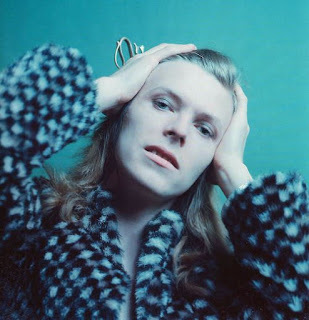 Side two opens with a cover of the Biff Rose/Paul Williams composition "Fill Your Heart," which sort of acts as a buffer for the next three songs that pay homage to Bowie's three major influences, "Andy Warhol," "Song for Bob Dylan" and "Queen Bitch." The latter was written as a tribute to The Velvet Underground and Lou Reed in particular. If you listen closely, you can hear hints of "Sweet Jane." The song's arrangement is very similar to the style Bowie would display on The Rise and Fall of Ziggy Stardust the following year.
Side two opens with a cover of the Biff Rose/Paul Williams composition "Fill Your Heart," which sort of acts as a buffer for the next three songs that pay homage to Bowie's three major influences, "Andy Warhol," "Song for Bob Dylan" and "Queen Bitch." The latter was written as a tribute to The Velvet Underground and Lou Reed in particular. If you listen closely, you can hear hints of "Sweet Jane." The song's arrangement is very similar to the style Bowie would display on The Rise and Fall of Ziggy Stardust the following year. The final song is a ballad called "The Bewlay Brothers." It was one of the last to be written and recorded for the album. Bowie told producer Ken Scott that he wrote the song with the American market in mind because "the Americans always like to read into things, even though the lyrics make absolutely no sense."
Although it received high praise from the critics, Hunky Dory did not really take off until the middle of 1972, after the commercial breakthrough of The Rise and Fall of Ziggy Stardust. Even Bowie himself credits the album as one of the most important of his career. He told Chris Roberts of Uncut Magazine in 1999, "Hunky Dory gave me a fabulous groundswell. I guess it provided me, for the first time in my life, with an actual audience—I mean, people actually coming up to me and saying, 'Good album, good songs.' That hadn't happened to me before. It was like, 'Ah, I'm getting it, I'm finding my feet. I'm starting to communicate what I want to do. Now: what is it I want to do?' There was always a double whammy there."
1971 was a remarkably great year for music and Hunky Dory was a huge reason why. For David Bowie, it concluded phase one of a brilliant career that can only be rivaled by ?
April 15, 2021
Buy This Book
Get your copy of Calif. by R.J. Stowell at Amazon or read it on your Kindle. And remember, Kindle Unlimited is FREE the first month. Thousands of titles from Harry Potter to Lord of the Rings - and Calif., of course! Here's the link. Help support your local writers.
Watch with sound, share and enjoy!
Signed copy? Contact me at rjsomeone@gmail.com - $12.00 - includes shipping.
April 10, 2021
'71
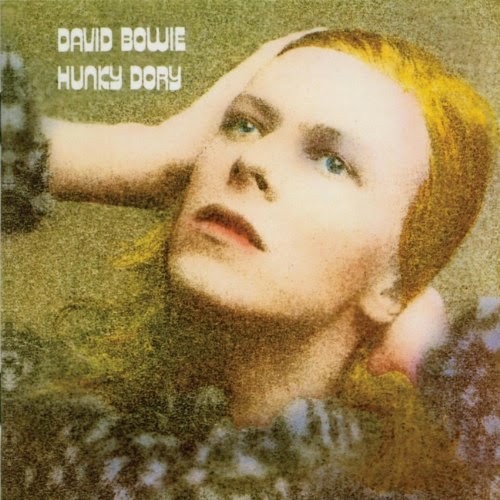 It was the year of Imagine, Hunky Dory, Sticky Fingers, Every Picture Tells A Story, Master of Reality (Black Sabbath), Electric Warrior (T-Rex), Pink Floyd's Meddle, Elton John's Madman Across the Water, Who's Next, Aqualung, Ram, Teaser and the Firecat and Led Zeppelin IV - and that was just the British side. In California Joni Mitchell put out Blue, The Doors, L.A. Woman, James Taylor, Mud Slide Slim, David Crosby, If I Could Only Remember My Name, Graham Nash, Songs For Beginners, Carole King, Tapestry and posthumously, Janis Joplin's Pearl. It was the year of California.
It was the year of Imagine, Hunky Dory, Sticky Fingers, Every Picture Tells A Story, Master of Reality (Black Sabbath), Electric Warrior (T-Rex), Pink Floyd's Meddle, Elton John's Madman Across the Water, Who's Next, Aqualung, Ram, Teaser and the Firecat and Led Zeppelin IV - and that was just the British side. In California Joni Mitchell put out Blue, The Doors, L.A. Woman, James Taylor, Mud Slide Slim, David Crosby, If I Could Only Remember My Name, Graham Nash, Songs For Beginners, Carole King, Tapestry and posthumously, Janis Joplin's Pearl. It was the year of California.Carole King was one of several artists to put out more than one album in 1971. She released Music later the same year. McCartney followed Ram with the first Wings' album Wildlife, while Yes followed up The Yes Album with Fragile - all in the same twelve months. The strength of the list is even more amazing based on the people who didn't put out new material: Dylan, Paul Simon, King Crimson. Roxy Music, Jackson Browne, Queen, Steely Dan and Bruce Springsteen had yet to release an album (next year, maybe).
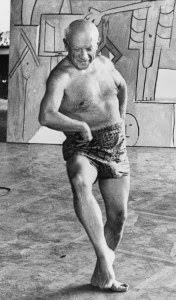 In 1971, Lifehouse was scrapped, even that was written in the stars. Pete Townshend never could get that behemoth off the ground (are behemoths supposed to fly?), but out of it came Who’s Next, Lifehouse minus the fluff and dodgy concepts.
In 1971, Lifehouse was scrapped, even that was written in the stars. Pete Townshend never could get that behemoth off the ground (are behemoths supposed to fly?), but out of it came Who’s Next, Lifehouse minus the fluff and dodgy concepts. The singles chart had one last fling with AM and a stellar lineup: "Roundabout," "My Sweet Lord," "Me and Bobby McGee," "Maggie Mae," "Levon," "Brown Sugar," "Iron Man," "Uncle Albert/Admiral Halsey," "Get It On," "Shaft" and "Riders on the Storm."
Manet painted Olympia and LeDejuener sur L'Herbe in the same year (1869). '71 was that good on the rock music front; not as innovative, not as shocking or earth shattering, but that good. Manet's favorite? I'm saying T-Rex. Monet? I think he'd like Blue. I can picture Picasso painting "Guernica," getting down to "Brown Sugar:" "I say 'yeah, yeah, yeah, wooo."




